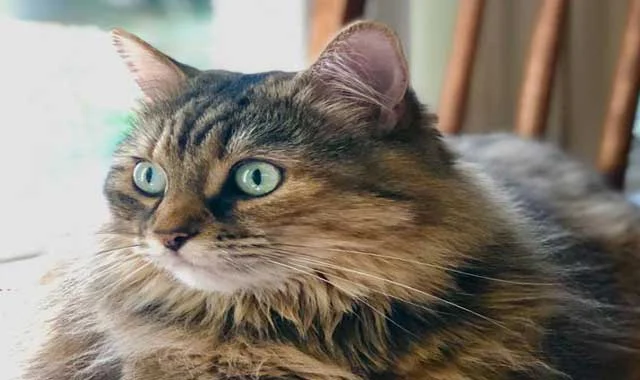 |
| Cymric cat Breed Information |
Cymric Temperament
Cymric cats are:
- Intelligent.
- Fun-loving.
- Playful.
- Extremely loyal to their humans.
- Get along well with other cats and dogs as well.
- Cymric (KIM-rick or KUM-rick) cats have a wonderful personality and have a very strong following in spite of their difficulties in breeding. A fun-loving and intelligent cat that is unusually loyal to their humans, adults and children alike, not only do they get along with other animals they can develop strong relationships with dogs too. An excellent jumper coupled with its playful nature you would be wise to keep your precious knick-knacks safely locked away. Some fanciers believe the Cymric is really a long haired variety of the Manx cat they are so similar. They are a playful, nonaggressive, gentle animal although not given to demanding affection they have a fascination with water providing they don’t take any unexpected dips. Often displaying dog like behaviour the Cymric can be taught to retrieve and has been heard to bark. Read also: Devon Rex Cat Breed Breed Information.
Where does the Cymric come from?
There are several theories as to the origins of the Cymric, the Isle of Man being the most recent.
What type of Body does the Cymric have i.e. coat, patterns etc?
The Cymric body characteristics include:
- A medium to large body type.
- Sturdy bone structure.
- Their tails are broken down into four categories: rumpy, rumpy-riser, stumpy and longy.
- Weighing between 7lbs – 13lbs with a round appearance.
- Dense, medium to long haired.
- They come in a variety of colors and patterns with full, large eyes ranging in color from copper, green, hazel and blue (although other colors have been recorded) and wide spaced ears.
- Typically Cymric cats have short bodies with arched backs and round hindquarters.
- Cymric cats have longer hind legs than forelegs giving them a distinctive arched look.
- Their coat has two lengths, a soft insulation fur similar to a rabbits and a longer courser layer of fur an inch longer than the softer fur beneath.
- The gait of this cat is also more similar to a rabbits hop than a normal cat walk due to the length and strength in its hind legs.
- Sought after by farmers for the hunting skills they have been known to bring down animals relatively larger than their own bodies.
History of the Cymric cat?
The origins of the Cymric cat are vague. It is believed this breed of cat is as old as the Manx and their similarities are striking with the main difference being their coat type. Although the breed has been around as long as the Manx cat it has only been in recent decades that it has been given its own name and standing.
Most commonly known as the Longhaired Manx it was only during the 1970’s that it was allowed to be registered as a Cymric named after the Welsh name for Wales by pioneering breeders Blair Wright and Leslie Falteisek and it is only in the CFF that it is still called a Longhaired Manx only because no one has campaigned for the change in that particular circle. It is believed the Cymric was introduced to the Isle of Man by human settlers many centuries ago, some even believe by Phoenician traders, Viking settlers who colonized the Isle or even by the arrival of the Spanish Armada.
The Isle of Man is situated between Ireland and England in the Irish Sea. There is also a theory that because of the proximity of the Isle of Man to the English coast the British Shorthair was introduced to the Isle and added to the Manx creating the Cymric although this has not been proven. Read also: Dragon Li Cat Breed Breed Information.
Food the Cymric eats?
The Cymric will eat normal cat foods whether it’s a tined food or biscuit.
Is the Cymric an indoor or outdoor cat?
The Cymric is equally at home indoors or out, being a very affectionate and friendly cat they will cuddle up with you but will be off amusing itself in no time.
Does the Cymric have health problem?
The Cymric is a difficult cat to breed. Depending on which genes are inherited from the parent cats Cymric cats usually have small litters. Up to 25 percent of kittens can die before birth, being absorbed in the womb, because they have inherited two copies of the gene that causes taillessness. Manx Syndrome is another huge problem for this breed as is Spina Bifida, bowel or bladder dysfunctions. Due to the spinal deformity Cymric cats often appear to have a rabbit like hop rather than a typical cat gait. Cymric cats with short spines don’t always have problems though but it is wise to put off acquiring your new pet until they are at least 6 months old, by this age it should be apparent if there are any problems. For more Information about cymric cat breed, click here.
